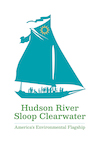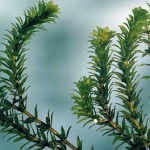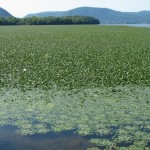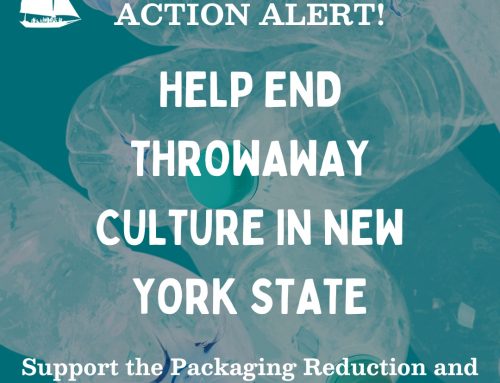Clearwater will hold two training sessions for volunteers who want to help survey local waterways for aquatic invasive species infestation on Sunday, August 30, 10:00AM-Noon and Tuesday, September 1, 1:00-3:00 PM. Both sessions will be at Black Rock Park in Croton-on-Hudson.
Our Aquatic Invasive Species program offers citizens the chance to help stop the spread of species such as European water chestnuts and Hydrilla Verticillata – an aggressive aquatic invasive plant recently discovered in the Croton River System. Our Invasive Species Program Coordinator, Samantha Epstein, will lead the AIS survey trainings. For more information, contact her at Epstein@Clearwater.org.
Trainings will teach aquatic invasive species identification, surveying methods, and data
collection protocol. We have surveying rakes available, and can also teach people how to build their own for under $30.
Clearwater started an Aquatic Invasive Species (AIS) Program in April 2015, with the goal of educating the public about aquatic invasive species and getting people involved in species surveying and ‘spread prevention.’ The AIS Program is funded by the Lower Hudson Partnership for Regional Invasive Species Management (PRISM) through the Environmental Protection Fund – more information about the Lower Hudson PRISM can be found at lhprism.org.
An invasive species is defined as one that is non-native; causes (or has the potential to cause) harm to the economy, environment, or human health; and causes harm that outweighs its benefits. There are all kinds of invasive species – terrestrial, aquatic, plant, animal, pathogen, insect, etc. There are almost 300 invasive species in the Lower Hudson region alone, and all of them are having an impact on our lives, whether we notice it or not.
While there are management options for many of these invasive species, the best management tool we have is prevention. By preventing an invasive species from entering into or spreading within our region, we eliminate the need to spend millions of dollars managing it in the future. This is why education and outreach is a necessity in invasive species management.





